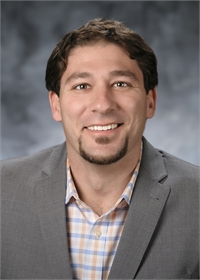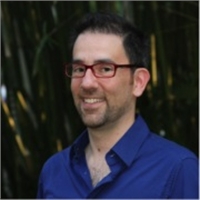Applications of Optics and Photonics in Space Workshop Night 3
This workshop will feature talks on different applications of Optics and Photonics in space. Employing Optics and Photonics beyond earth's atmosphere is a new frontier for laser communications, optical sensors, and space exploration, which is being driven by the affordable launch cost of small satellite systems (e.g. CubeSats), the military, NASA's space telescopes, as well as the commercial delivery systems of SpaceX, Blue Origin, and Virgin Galactic.
These applications include secure quantum optical communication systems, optical sensors for earth observation (weather forecasting, climate change, natural resources), space-based Lidar systems, monitoring sun activity for solar storms, the Hubble and James Webb telescopes for deep space observation, planetary missions (e.g. New Horizon Pluto and Kuiper belt mission), the search for extra-terrestrial life and exoplanets, and space based optical interferometers for the detection of gravitational waves. A NASA sponsored program - Lunar Laser Communication Demonstration (LLCD), 622 megabits per second from moon to earth, ushered in a new era in high-speed outer space laser communications, changing the landscape of laser-based space data communication forever. The future NASA Orion Mission (human to moon) will include a lasercom link. In addition, closer to earth, Google and Facebook are exploring high-speed free-space optical communications (Internet in the sky) for expanding their customer base.
This workshop will bring together leading experts in this field to discuss the latest technological applications of Optics and Photonics in space. This workshop also aims to foster communication and collaboration through networking among the individual engineers and researchers attending. Learn more about the rapid innovations in space optics and photonics directly from the foremost researchers in the different specialties involved, by registering for and attending this local Boston workshop on Applications of Optics and Photonics in Space.
The workshop expenses have been generously supported by MIT Lincoln Laboratory
For more information on the technical content of the workshop, contact either:
1) Farhad Hakimi, (fhakimi@ieee.org), Chair
2) Bill Nelson, (w.nelson@ieee.org), Co-Chair
3) Dean Tsang, (tsang@ieee.org), Co-Chair
Date and Time
Location
Hosts
Registration
-
 Add Event to Calendar
Add Event to Calendar
- MIT Lincoln Laboratory
- 3 Forbes Rd
- Lexington, Massachusetts
- United States 02420
- Building: Entrance by the Flags
- Room Number: Cafeteria
- Contact Event Host
- Co-sponsored by MIT Lincoln Laboratory
Speakers
 Prof. Jonathan Klamkin of University of California, Santa Barbara, CA
Prof. Jonathan Klamkin of University of California, Santa Barbara, CA
Integrated Photonics for Communications and Sensing in Space
Abstract: The talk will be about the needs for space and ground-based telescopes, and the technologies that make them possible. Half of the talk will focus on the James Webb Space Telescope, the most ambitious space telescope to date, and its successors. The other half will be about the largest ground-based telescopes (current and future).
Biography:
Biography: Jonathan Klamkin is a professor at the University of California Santa Barbara where he leads a group of ~20 researchers conducting pioneering research in integrated photonic technologies. Previously he held positions at MIT Lincoln Laboratory, the Scuola Superiore Sant'Anna, Pisa, Italy, and Boston University. He was a Chair for the 2018 Integrated Photonics Research, Silicon and Nanophotonics Conference, Vice-Chair for the Microwave Theory and Techniques Society Subcommittee on Microwave Photonics, Associate Editor for Photonics Technology Letters, and Steering Committee Member for the Journal of Lightwave Technology. Prof. Klamkin is the recipient of a NASA Early Career Faculty Award and the DARPA Young Faculty Award. He or his students have won best paper awards at the Conference on Optoelectronic and Microelectronic Materials and Devices Conference (COMMAD), the Microwave Photonics Conference (MWP), and the Asia Communications and Photonics Conference (ACP). He has published more than 180 papers, and holds 3 patents. Group website: http://integratedphotonics.ece.ucsb.edu/
Address:Santa Barbara, California, United States
 Prof. John W. Conklin of University of Florida, Gainesville, FL
Prof. John W. Conklin of University of Florida, Gainesville, FL
The Laser Interferometer Space Antenna: Observing mHz Gravitational Waves from Space
Abstract: Gravitational wave detection is one of the most compelling problems in science today. It represents an entirely new way of observing our universe and therefore provides enormous potential for scientific discovery. The first direct detections in 2016 by the ground-based LIGO observatory has already brought new insights into the population of black holes and the evolution of our Universe.
The Laser Interferometer Space Antenna (LISA), a joint venture between NASA and the European Space Agency, will be the first mission to detect and observe low-frequency gravitational waves from space, complementing observatories on the ground. LISA will be the largest instrument ever constructed, consisting of three Sun-orbiting spacecraft that form an equilateral triangle, with each side measuring 2.5 million kilometers in length. Each spacecraft houses two free-floating test masses (TM), which are protected from all disturbing forces so that they follow pure geodesics in spacetime. A “drag-free” control system is supplied with measurements of the TM position and commands external micronewton thrusters to force the spacecraft to fly in formation with the test masses. Laser interferometry is used to measure the minute variations in the distance, or light-travel time, between these purely free-falling TMs, caused by gravitational waves. LISA represents the ultimate engineering challenge in precision ranging between spacecraft and precision accelerometry. Variations in the distance between test masses, spaced millions of km apart, must be measured to 10–11 m/Hz1/2, and the test masses must experience free fall at a level below 3×10–16 g/Hz1/2. This talk will present the LISA project and the key contributions made by the University of Florida Precision Space Systems Lab to realize this ground-breaking mission.
Biography:
Biography: John Conklin a University Term Professor in Mechanical and Aerospace Engineering at the University of Florida. He joined the UF faculty in 2012 after a three-year research associateship at the W.W. Hansen Experimental Physics Laboratory at Stanford. He received his BS and MEng degrees from Cornell and PhD from Stanford in 2009. In 2011, John was the Fulbright Junior Lecturer at the University of Trento in Italy. He is the chair of NASA’s Physics of the Cosmos Program Analysis Group and a member of NASA’s Astrophysics Advisory Committee. He has led the Technology Working Group for NASA’s Gravitational Wave L3 Study Team. John has been awarded the NASA Group Achievement Award (2005) for the Gravity Probe B science team, the Balhaus Prize (2009) for best PhD thesis in Aeronautics and Astronautics at Stanford, the Zeldovich Medal (2010) from COSPAR & the Russian Academy of Sciences, the NASA Early Career Faculty Award (2014), NASA’s Nancy Grace Roman Technology Fellowship in Space Astrophysics for Early Career Researchers (2015), Teacher of the Year Award (2015) in Mechanical and Aerospace Engineering at UF, and the Space Science Award from AIAA (2016) for the Gravity Probe B science team.
Address:Gainesville, Florida, United States
Agenda
7 PM - Opening Remarks
7:15 PM - First Speaker + Q&A
8:15 PM - Brief Intermission
8:30 PM - Second Speaker + Q&A
Advance registration and fee required (Open to all IEEE members as well as non-members)
$75/$85 (IEEE Member/Non-Member) early registration fee for ten 1-hour talks over five nights; cost includes coffee and cookies each night, as well as downloadable copies of speakers slides. Early registration deadline March 31st, 2018. $85/$95 (IEEE Member/NonMember) post deadline fee.
Registration form, abstracts, speaker’s bios at: http://www.bostonphotonics.org/workshops/aops19/
IMPORTANT NOTE: This workshop is being held at the Forbes Road site for MIT Lincoln Laboratory, a satellite facility about 1.5 miles south of the main MIT-LL site.
